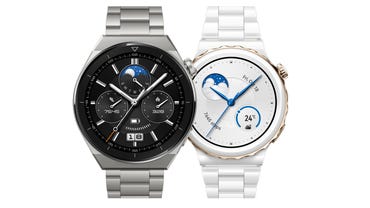[ad_1]
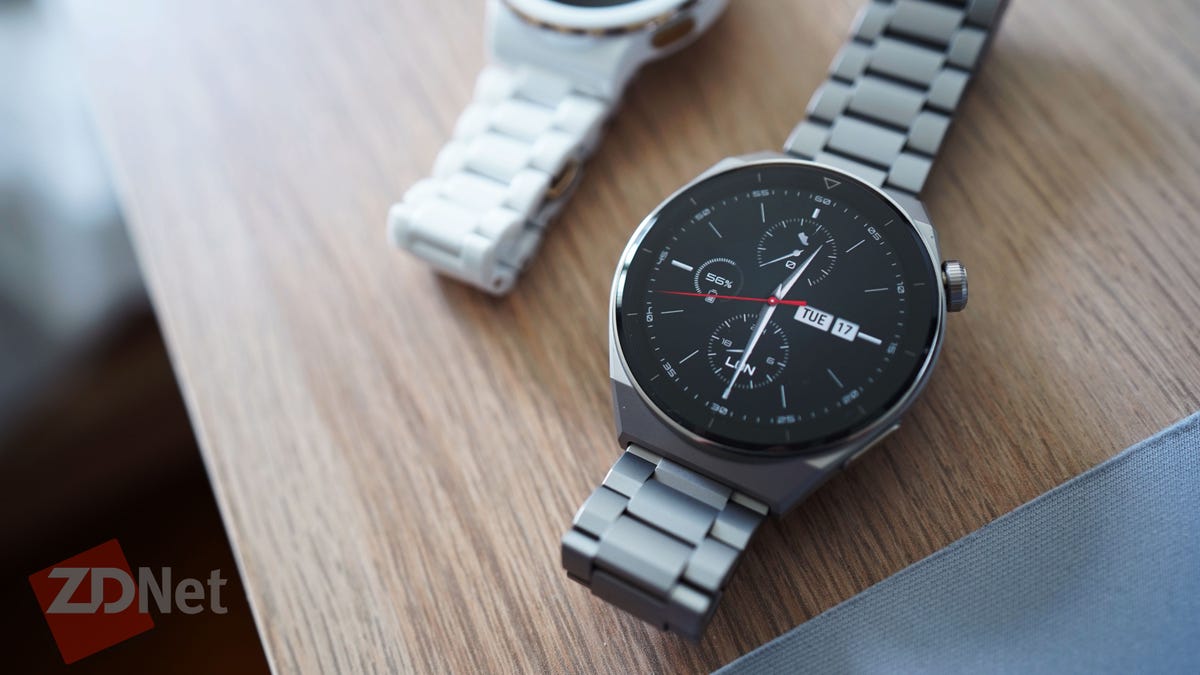
Huawei today announced the Watch GT 3 Pro, its latest addition to the HarmonyOS ecosystem. Coming in two editions: Titanium and Ceramic, the new smartwatch looks to compete against the likes of Apple and Samsung through luxury materials and a catalog of fitness modes and health-monitoring tech. More specifically, the GT 3 Pro aims to be the best smartwatch for free diving and underwater activities.
There is only one size for each watch edition; the Titanium has a 46.6 mm body, and the Ceramic has a smaller 42.9 mm. Choosing between the two is not as simple as size preference, though. The higher-grade Ceramic watch sells for £429.99, compared to the Titanium version, which costs £299.99. Both watches can be preordered today.
That said, while Huawei will not be selling the watches in the US, I’ve been testing both variants of the GT 3 Pro. Here are my initial thoughts and what I like (and don’t like) about the latest wearable.
Like
- Sharp and bright AMOLED screen
- Over 100+ workout modes
- Sapphire glass lens is highly scratch- and shatter-resistant
- IP68, 5ATM, and EN 13319 certified
Don’t Like
- Notifications are not as interactive as WearOS/watchOS
- Fairly heavy design for fitness use
- Not available in the US
Specifications
| Huawei Watch GT 3 Pro Titanium | Huawei Watch GT 3 Pro Ceramic | |
Dimensions | 46.6mm x 46.6mm x 10.9mm | 42.9mm x 42.9mm x 10.5mm |
Wrist size | 140-210 mm | 130-190 mm |
Weight | 54 g (without watch strap) | 50 g (without watch strap) |
Display | 1.43-inch AMOLED color screen | 1.32-inch AMOLED color screen |
Watch case | Titanium and sapphire glass | Material: Nanocrystalline Ceramic + Sapphire glass |
Watch strap | Black fluoroelastomer, light titanium, or gray leather | White Ceramic or White leather |
Sensors | Accelerometer, gyroscope, magnetometer, optical heart rate, barometer, and temperature | Accelerometer, gyroscope, magnetometer, optical heart rate, barometer, and temperature |
Durability | IP68, 5ATM, and EN 13319 | IP68, 5ATM, and EN 13319 |
Battery life | Up to 14 days with typical use | Up to 7 days with typical use |
System requirements | HarmonyOS 2 or later, Android 6.0 or later, and iOS 9.0 or later | HarmonyOS 2 or later, Android 6.0 or later, and iOS 9.0 or later |
Design
Even though the GT line has always been for active lifestyle and fitness users, the GT 3 Pro series — especially the Ceramic edition — look more like luxury watches than anything else. From the moment I tried on the Titanium and Ceramic models, working out was definitely the last thing on not on my mind. The watches are heavy; the Titanium model weighs 54g, and the Ceramic is 50g, and that’s not counting the weight of the three-piece-linked watch bands. For fitness, I’d prefer a lighter material that’s breathable and flexible enough to match my skin as it heats up.
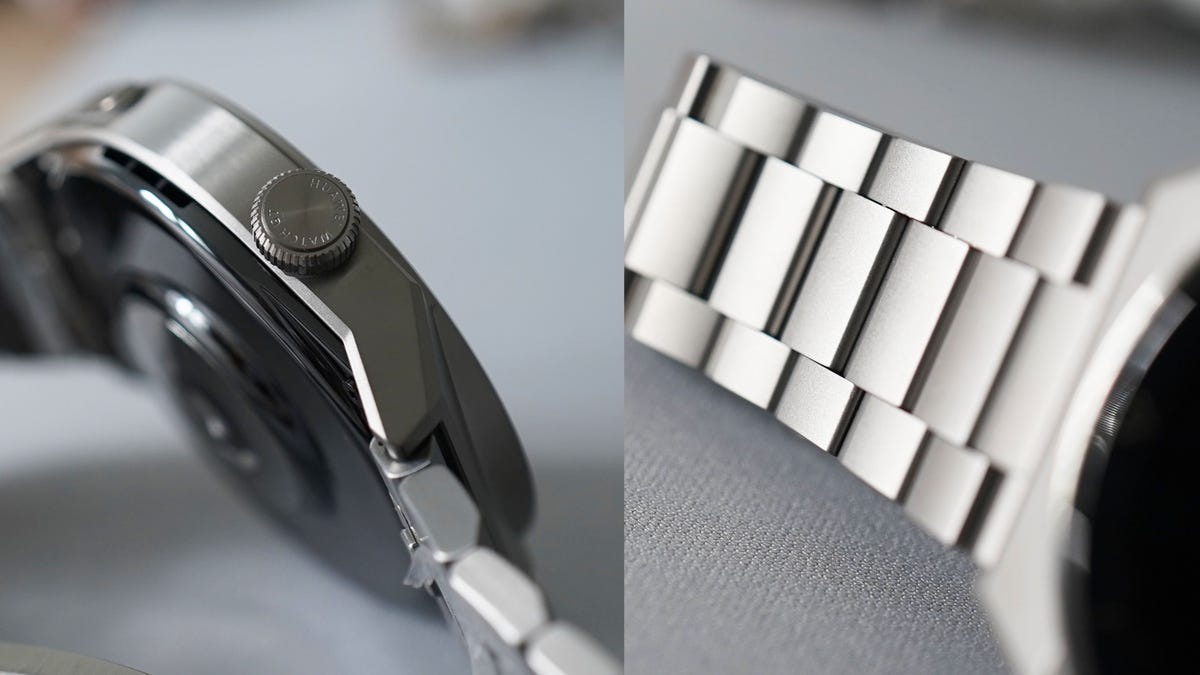
A 3D rotating crown and three-piece link make the GT 3 Pro look and feel like a traditional luxury watch.
June Wan/ZDNet
Both units come with a 3D rotating crown, the same dialer that you’d find on traditional watches to set the time. Built for smartwatches, you can rotate or press the knob to navigate the settings menus, values, and interfaces, keeping touch inputs at a minimum. There’s also an electrocardiogram (ECG) button that doubles as a function key when not in use. While I’m able to map it to pull up a list of workout modes or measure my heart rate, I’d love to see it be able to just work as a regular back key. That way, I wouldn’t have to resort to swipe gestures to navigate the watch.
Fortunately, I didn’t mind spending a second longer on the GT 3 Pro. The displays on both models are stellar. You’re getting a 1.43-inch AMOLED panel with the Titanium edition and a 1.32-inch AMOLED with the Ceramic. Both are plenty sharp, pleasant to look at, and kept underneath a layer of sapphire glass. Likewise, the highly scratch- and shatter-resistant material is found in the sensor part of the back shell. I’ve also been very impressed with the GT 3 Pro’s ambient light sensor, appropriately dialing the brightness level in different environments.
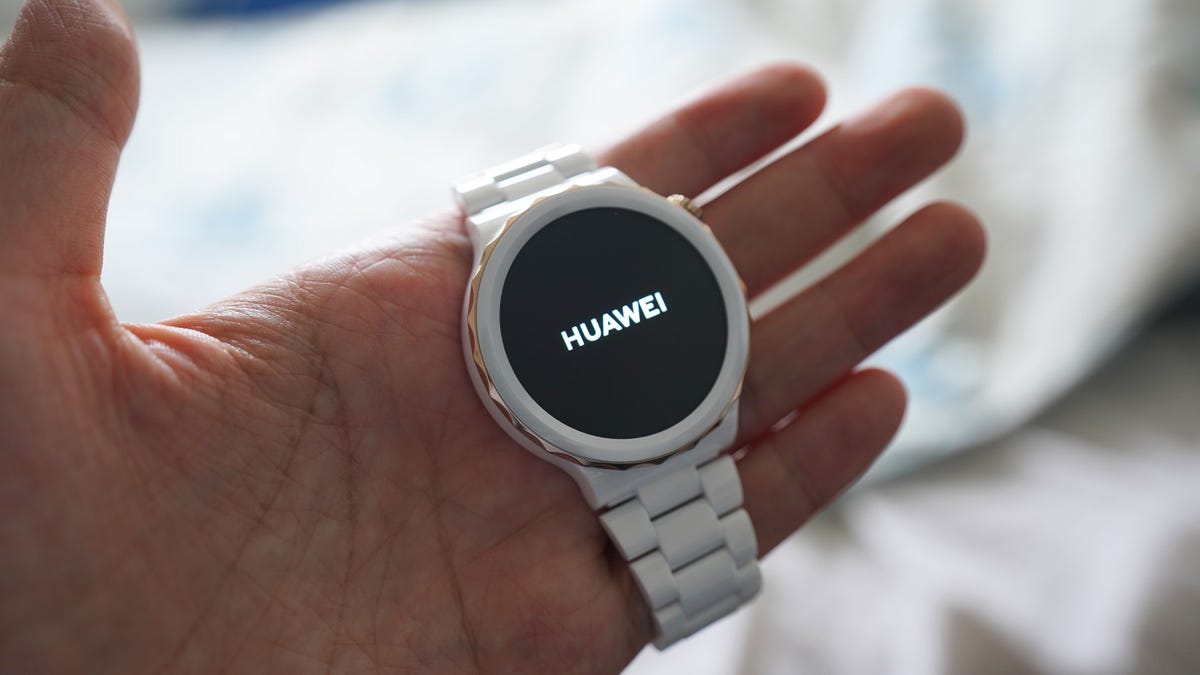
The Ceramic edition has a smaller, more elegant appearance than the Titanium.
June Wan/ZDNet
One of the biggest upgrades to this year’s GT 3 Pro is its durability and water resistance. Both versions of the watch are certified for IP68 and 5ATM, meaning they can withstand submersion in 1.5 meters of fresh water for up to 30 minutes. To take things up a notch, the GT 3 Pro also complies with EN 13319 to support free dives (or skin diving) at up to 30 meters deep. There are not a lot of free-diving compatible smartwatches that look as good as these.
As much as I love a chunky, industrial smartwatch, I’d like to take a moment to acknowledge the Ceramic edition. With nearly every manufacturer now having its own line of smartwatches in a saturated market, the GT 3 Pro Ceramic edition carries its own circular aesthetic. There are gold trimmings that accent different parts of the timepiece in a way that is both subtle and proud. The seashell pattern bezel, according to Huawei, “symbolizes 24 hours and 24 solar terms, arising the ripple effects in time when the watch hands rotate.” Also, rarely do we do completely white casings for watches, let alone smartwatches.
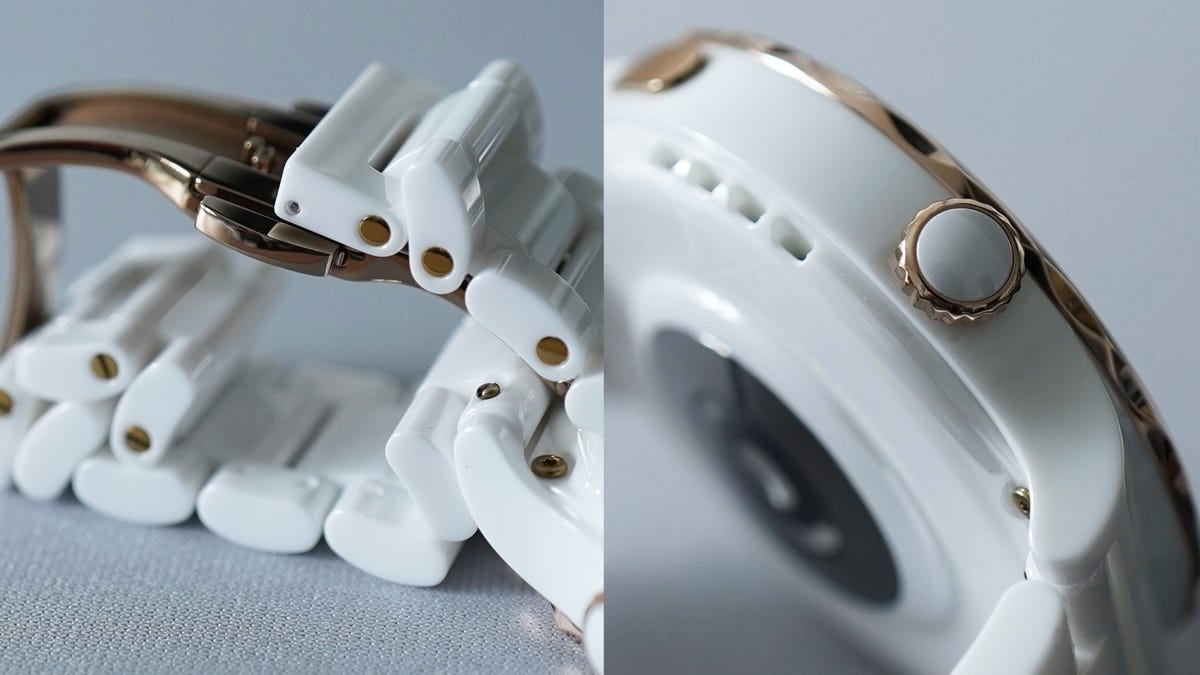
The Ceramic edition marries a glossy white finish with gold accents.
June Wan/ZDNet
Software
Being in the US, testing the Watch GT 3 Pro meant that I had to sideload Huawei’s AppGallery onto my Android device, download the Huawei Health app from there, and then finally be able to scan the QR code on the watch to pair. The process was tedious, unintuitive, and understandable. Fortunately, after the initial setup, connecting to the watch has been as easy as turning on my phone’s Bluetooth and waiting for the two devices to sync.
Once paired, navigating around HarmonyOS, the watch’s software is very straightforward. A swipe down from the home screen displays quick toggles like Settings, Screen on, Alarm, and Find my phone. There’s also Drain, a nifty vibration and sound beacon that’s meant to shake out any water that’s seeped into the watch.
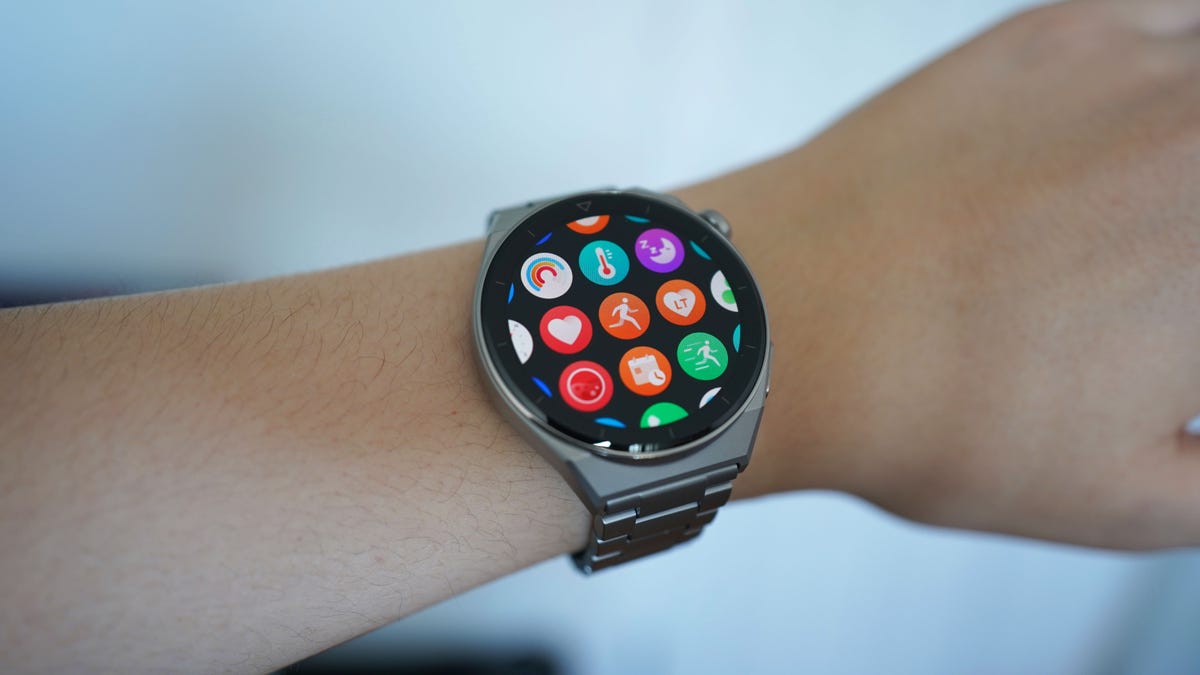
Huawei’s watch store is still limited in terms of third-party fitness apps, but there’s a decent alternative to the usual Google and Apple-owned software.
June Wan/ZDNet
Swiping to the left of the home screen brings up a weather widget, and I was pleasantly surprised to find the temperature displayed in Fahrenheit. The leftward panel is also where notifications from the watch and your phone are shown, including text messages, calendar reminders, emails, and more. My only issue with notifications on HarmonyOS is that interactions from the watch is limited. Unlike WearOS and watchOS, only certain apps like WeChat gives you the ability to submit a quick reply. For unsupported apps, which include Slack, the Google suite, and Microsoft Outlook, you can only glance at the notification and nothing else. Since I like to work out without my phone, the inability to interact from the watch seems like a missed opportunity.
Lastly, swiping to the right side of the home screen brings up slides of widgets, including a heart rate and Sp02 monitor, the illumination percentage of the Moon, a sleep tracker, and more. You can, of course, add, remove, or switch the places of the widget slides to your liking.
Ultimately, the Watch GT 3 Pro thrives on Huawei’s own app store. That means that most of the watch faces, widgets, and third-party apps that you’re accustomed to on an Apple Watch or Android wearable are likely not present in the AppGallery. Instead, you’ll have to dig through and settle for a close alternative.
Also: The best fitness trackers: Improve your health with 24/7 data
Fitness modes
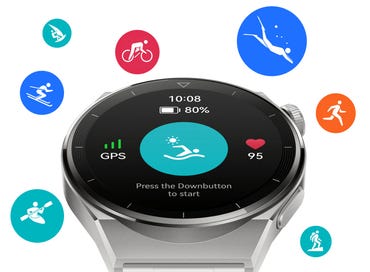
Image: Huawei
It was less than a month ago when my ZDNet colleague Sandra Vogel reviewed the Huawei GT Runner and praised it for the copious amounts of fitness features and metrics. The Huawei GT 3 Pro builds on those values with a new Intelligent Running Plan feature and a Free Dive mode.
- Intelligent Running Plan uses machine learning to generate a targeted fitness plan to leverage your personal workout history, physical data, and body type. That includes the level of intensity and time of your jogs, bicycling, at-home workouts, and more. I’ll have to see how fine-tuned this feature is with time.
- Free Dive mode uses the GT 3 Pro’s new depth barometer to map out your diving ascent rate, real-time depth, maximum depth, water surface rest time, and more. While I’m not a diver, all of these specs would be great to have on the record if I was.
Free Dive mode is, of course, among the hundreds of existing fitness modes on the watch including hiking, walking, triathlon, skiing, rowing, mountain climbing, and more.
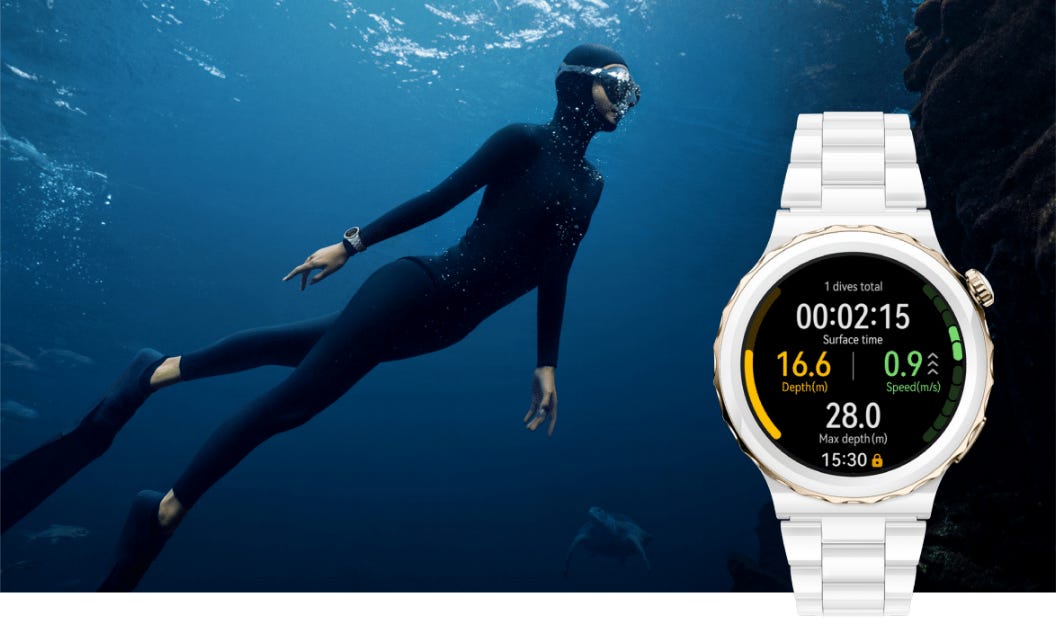
Image: Huawei
Electrocardiogram monitoring
Today’s smartwatches have no shortage of health monitoring features. But while many tout optical heart rate and ECG sensors, only the best are certified by the manufacturer’s respective government agencies. In the case of the Huawei Watch GT 3 Pro, both the Titanium and Ceramic watches are certified as Class II medical devices from China’s National Medical Products Administration. However, it is not approved or certified by organizations in the UK, Europe, or North America. Therefore, only users of select countries in Asia, South America, and Africa can actually use the built-in ECG feature.
With its ECG sensor module, Huawei says that the GT 3 Pro can “provide single-lead ECG measurements, real-time analysis, sinus rhythm, atrial fibrillation, and premature atrial and ventricular beat reminders to stay informed and proactive about major heart health-related risks.” The reporting on the newer model is said to be much faster and accurate than its 2020 predecessor.
Also: Best sports watch: Garmin, Coros, Polar, and more
Battery life
Huawei claims that the Watch GT 3 Pro Titanium will last 14 days before needing to wirelessly charge, while the smaller Ceramic version will last seven days. Since I haven’t used the watches for more than a week, I cannot attest to those promises. I will say, however, that the Titanium version that I’ve been using for the last four days is currently at 56%, so it will need some battery magic to last ten more and match Huawei’s numbers.
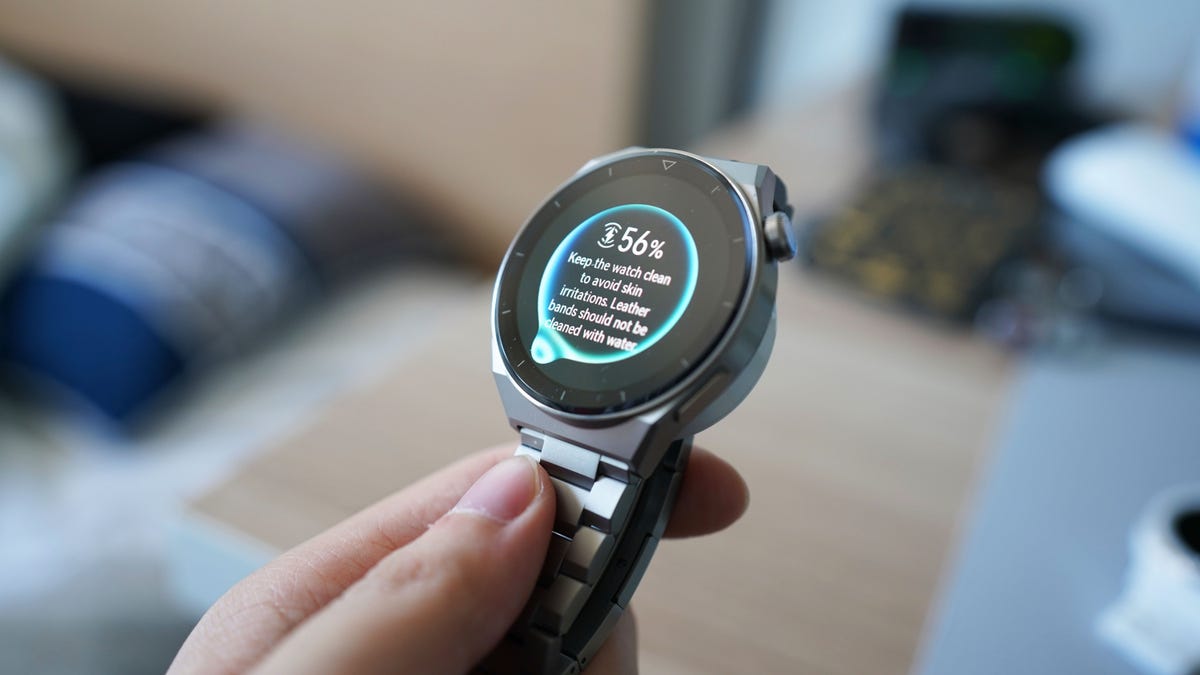
June Wan/ZDNet
Stay tuned
While my initial impressions of the Huawei GT 3 Pro have been positive, I’ll reserve my final review rating for a week or two down the road. What’s clear to me is that Huawei has built a smartwatch that caters to those who seek the aesthetics of a traditional watch, plus the informational benefits of a smart one. With new features like Free Dive mode, there’s a particular niche of aquaphiles that it’s wanting to secure before any other manufacturer does.
[ad_2]
Source link


